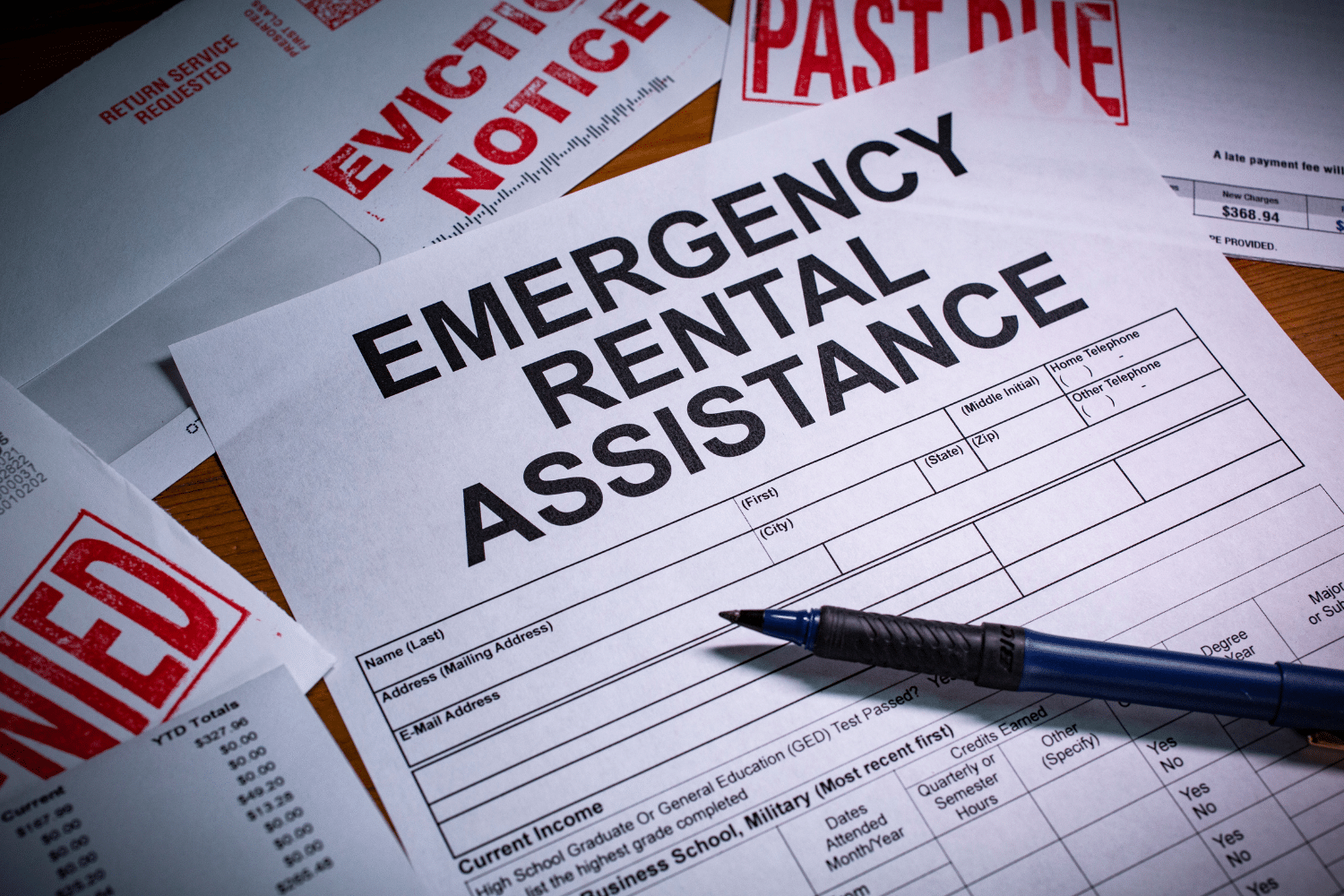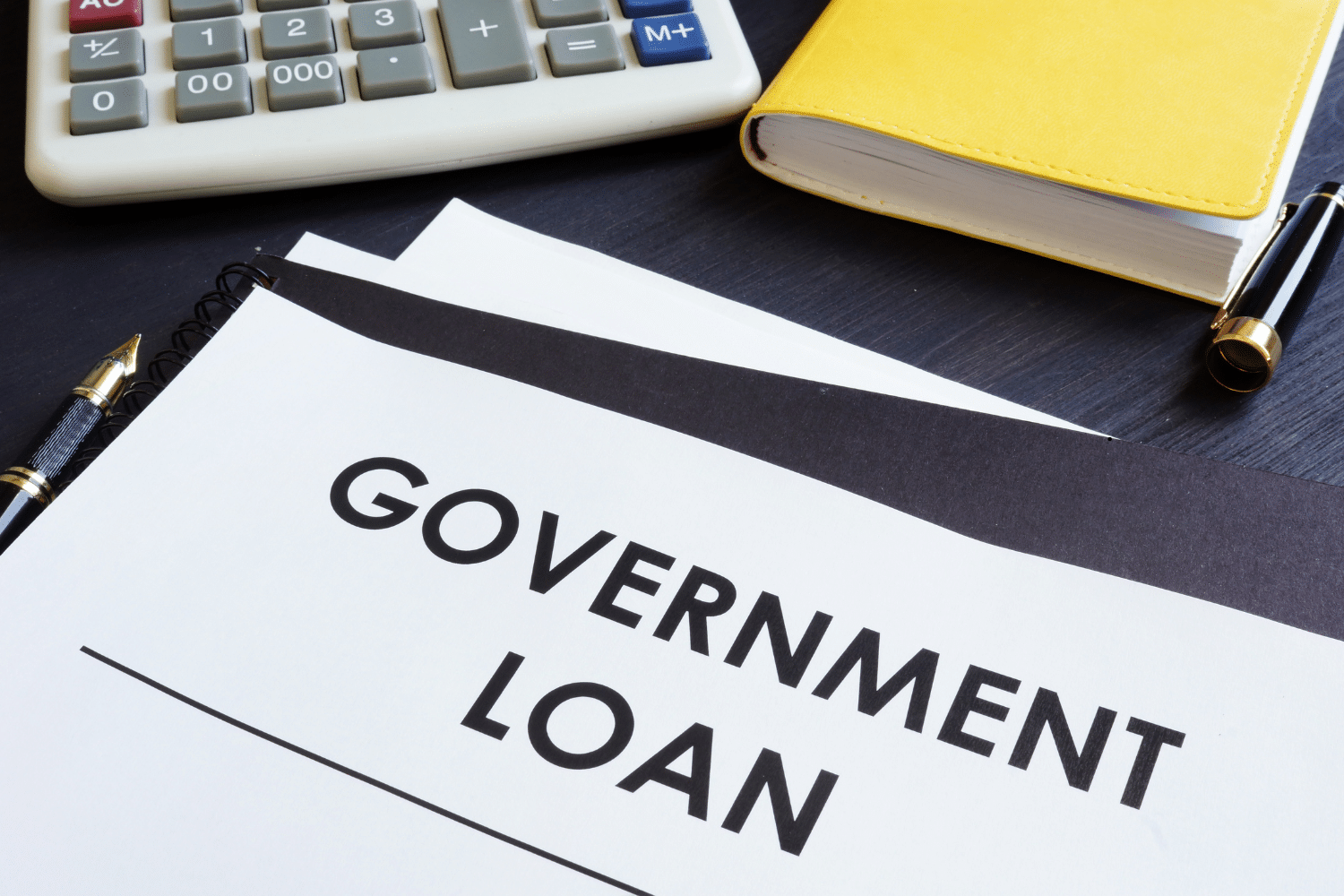Struggling with rent? Emergency rental assistance programs are here to help. If financial challenges have made it hard for you to pay rent or utilities, these programs provide much-needed support. In this article, you’ll learn how these programs work, who can qualify, and how to apply for help.
Key Takeaways
- Emergency Rental Assistance Programs provide critical support for households facing housing crises, primarily targeting low-income families affected by overdue rent due to unforeseen circumstances.
- Eligibility for assistance generally depends on household income, typically requiring applicants to earn at or below 50% of the area median income and demonstrate rental delinquency with necessary documentation.
- The application process includes submitting required documentation through designated portals, adhering to specific deadlines, and understanding prioritization criteria to improve chances of receiving assistance.
Understanding Emergency Rental Assistance Programs

Emergency rental assistance programs are essential lifelines for households struggling to pay rent or utilities due to unforeseen crises. These programs, such as the Emergency Rental Assistance Program (ERAP), specifically target residents facing housing emergencies because of overdue rent. The Assisted Housing Relief Program, another type, offers rental assistance for tenants in specific multifamily rental communities, helping to stabilize housing for many.
The need for these programs skyrocketed during the COVID-19 pandemic, which significantly impacted individuals’ ability to pay rent. Federal housing assistance programs, primarily funded through the U.S. Department of Housing and Urban Development (HUD), play a crucial role in supporting renters through various subsidies. Collectively, these efforts have disbursed over $46 billion to help renters avoid eviction and maintain housing stability.
Understanding these programs’ scope and purpose is the first step in realizing the safety net they provide. Whether you are directly affected or know someone who might be, these programs can offer a critical lifeline during tough times.
Eligibility Requirements for Rental Assistance
Knowing if you qualify for rental assistance is crucial. Generally, eligibility hinges on household income, with a common threshold being at or below 50% of the area median income (AMI). For instance, DC residents earning less than 40% AMI and at least 30 days behind on rent also qualify for assistance. These income limits can vary, so it’s essential to check specific program requirements.
Applicants must demonstrate rental delinquency, often needing to provide a rent ledger verifying overdue payments and fulfilling their rental obligations. Required documentation typically includes a valid lease, proof of income like paystubs or bank statements, and a completed Tenant Certification form. These programs aim to support low-income families and communities disproportionately affected by housing instability.
Eligibility extends to various regions, each with its criteria. For example, Denver residents are eligible if they meet the outlined criteria. Having all required documentation and understanding the specific income limits for your area will streamline the application process.
How to Apply for Emergency Rental Assistance

Applying for emergency rental assistance involves several steps, starting with a pre-application available on the DOLA website. This initial step helps to determine your preliminary eligibility. Once you move forward, you will need to provide required documentation, including a valid lease identifying the primary tenant, proof of income such as paystubs or bank statements, and a rent ledger to confirm unpaid rent.
During the application process, it’s vital to respond promptly to any inquiries from nonprofit representatives. They may need additional information or clarification to process your application efficiently. If you discover a mistake in your application, don’t panic. Contact the CARE Center for assistance in making corrections.
Following these steps and keeping your documentation in order can increase your chances of securing financial assistance to cover your rent and utility bills.
Types of Financial Assistance Available

Emergency rental assistance programs offer a variety of financial support to help households in need. These programs can cover expenses such as unpaid rent, utilities, and related housing costs. The Emergency Rental Assistance Program, for example, provides emergency rental assistance funding for rental arrears, temporary rental assistance, and utility assistance programs. This broad range of support can make a significant difference for renters, utility providers, and landlords alike.
Specific expenses covered by these programs include:
- mobile home rent
- lot fees
- utilities
- security deposits
- the first month’s rent
This assistance helps prevent eviction and supports households facing housing instability. Additionally, limited prospective rent assistance may be available to eligible households in the realm of affordable housing, ensuring they can manage future rent payments through a property management company.
State-specific programs, such as Maryland’s Rental Allowance Program, offer targeted support to low-income individuals facing homelessness or critical housing needs. Knowing the types of financial assistance available can help you identify the resources you need to maintain stable housing during difficult times.
Federal vs. State Rental Assistance Programs

Federal and state rental assistance programs provide vital support but operate differently. Two primary federal funding streams, ERA1 and ERA2, were established to facilitate emergency rental assistance funds, each with different allocation amounts. These programs are crucial in helping renters across the nation maintain housing stability.
State-specific programs, like the Colorado Emergency Rental Assistance (CERA) program, utilize state funds from sources such as Proposition 123. These programs often combine one-time federal funding with state and local sources to provide comprehensive support. The application process for state programs like CERA remains similar to that of federal assistance programs, ensuring consistency.
Local rental assistance programs operate independently, each establishing its criteria and processing methods. For instance, various counties in Maryland have specific rental assistance programs tailored to their residents’ needs. Recognizing the differences between federal and state programs can help you navigate the application process more effectively.
Important Deadlines and Application Portals
Adhering to deadlines and using the correct application portals are critical steps in securing rental assistance. Pre-application forms for rental assistance are typically available for three days each month. Depending on the program, applications can be submitted either monthly or bimonthly. It’s essential to keep track of these dates to ensure your application is considered.
For instance, the ERAP application portal was closed as of November 20, 2024, with changes to rental assistance programs set to be implemented on January 21, 2025. For more information, you can visit the ERAP website: erap.dhs.dc.gov. The application portal offers options in multiple languages, making it accessible to a broader audience.
If you need additional translation assistance, you can contact the CARE Center at 1 (303) 838-1200. Checking your local county’s website can also provide specific details about local rental assistance programs. Keeping track of these deadlines and using the correct portals will streamline your application process.
Prioritization of Assistance
Understanding how assistance is prioritized can help you gauge your application’s chances. Households that include individuals currently unemployed and not having worked in the last 90 days are given priority. Additionally, local programs may prioritize applications from households earning below 50% of the area median income. In Maryland, households with incomes at or below 50% of the area median income are prioritized when processing rental assistance applications.
In Maryland, applications from families with individuals unemployed for the last 90 days are also prioritized. Programs run by Public Housing Authorities are included in this prioritization framework.
The Statewide Rental Assistance Voucher Program in Maryland prioritizes assistance for:
- Families with children
- Veterans
- Homeless individuals
- Those with disabilities
Certain multifamily properties classified as Class C and D that serve lower-income families are also given priority. Understanding the prioritization criteria helps you prepare your application and know what to expect during the review process.
What to Do If Your Application Is Denied
Facing a denial can be disheartening, but there are steps you can take. If a denial is upheld, you may have the option to appeal the decision in state or federal court. Upon receiving a denial, you must be informed of your right to an informal hearing or review if the application was for public housing or a voucher. This gives you an opportunity to present your case.
Applicants have the right to obtain copies of their application file before attending any hearing or meeting. During the hearing, you can present evidence, call witnesses, and challenge the reasons for your denial. If denied due to inadequate documentation, you can reapply with a new application or appeal the decision.
These steps ensure that you have a fair chance to secure the assistance you need.
Reporting Fraud and Abuse in Rental Assistance Programs

Maintaining the integrity of rental assistance programs is crucial. Individuals can report fraud in the Emergency Rental Assistance Program by completing and submitting the Emergency Rental Assistance Program Fraud Reporting Form. This helps maintain the program’s credibility and ensures that funds are distributed to those genuinely in need.
To file a complaint regarding program discrimination in the Emergency Rental Assistance Program, you should contact the designated authority. Ensure that your complaint is submitted directly to them. Reporting fraud and abuse helps protect the integrity of the assistance programs and ensures that resources are used appropriately.
Reasonable Accommodations for Applicants with Disabilities
Applicants with disabilities are entitled to reasonable accommodations to ensure they have equal access to rental assistance programs. These adjustments can include changes to rules or policies directly related to their disability. Requests for reasonable accommodations must be evaluated based on whether they impose an undue financial or administrative burden on the program.
Understanding and requesting these accommodations helps applicants with disabilities receive the support they need without unnecessary barriers.
Contact Information for Local Agencies
Knowing where to reach out for further assistance is important. In Maryland, residents should contact their specific county for details about local rental assistance programs. The Maryland Emergency Rental Assistance Call Center can be reached at 877-546-5595. For rental assistance inquiries in Maryland, you can email the Maryland Department of Housing and Community Development at [email protected].
Additionally, individuals should report fraud related to the Emergency Rental Assistance Program to both the local agency overseeing the program and the Office of Inspector General. Local law enforcement agencies can also assist in addressing issues of fraud and may offer victim support services. Knowing who to contact can streamline your efforts in securing the assistance you need.
Summary
Navigating the world of emergency rental assistance programs can be daunting, but understanding the basics, knowing who qualifies, and being aware of the application process can make it much easier. These programs are designed to provide crucial support during times of financial hardship, helping households maintain stability and avoid eviction.
As you move forward, remember that there are resources available to assist you at every step. Whether you need help understanding eligibility requirements, applying for assistance, or dealing with a denial, there are agencies and programs ready to support you. Stay informed, be proactive, and don’t hesitate to reach out for the help you need.
Frequently Asked Questions
To obtain assistance with rent in DC, you can apply for the STAY DC program, which offers financial aid for housing and utility expenses. Alternatively, tenants can call (202) 442-9505 for referrals to rental assistance and legal counsel.
Emergency rental assistance programs provide financial support to households struggling to pay rent or utilities due to hardship, helping to prevent eviction and ensure housing stability.
Individuals are eligible for rental assistance if their income is at or below 50% of the area median income and they can provide documentation of rental delinquency.
To apply for emergency rental assistance, complete a pre-application on the DOLA website, submit required documentation such as a valid lease and proof of income, and ensure you respond promptly to inquiries from nonprofit representatives.
Emergency rental assistance is available to cover unpaid rent, utilities, mobile home fees, security deposits, and even first month’s rent. This financial help ensures housing stability and addresses immediate financial needs.








